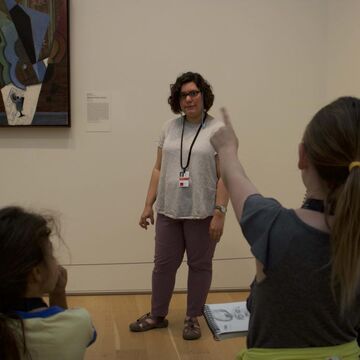|
Description
In this course we will focus on disciplinary and interdisciplinary art and design practices of contemporary art production. This team-taught, year-long class explores the materials and techniques of surface, space, and time (2D, 3D, and 4D), as well as the connections and interplay of these areas. Core Studio integrates the formal with the conceptual, traditional with the contemporary, and makes visible a variety of approaches in current cultural production in order to foster the development of students? emerging practices as makers and thinkers. In this interdisciplinary studio course students will be authorized to use a variety of school shops, materials and equipment; including the woodshop, plaster studio, digital lab, sewing machine, hand tools, sound and video production, digital workflows and principles of visual fundamentals. This is a hands-on making class, faculty present artists and content related to a particular toolkit and, or project theme. Every section of Core Studio has shared learning outcomes which are uniquely realized by each Core faculty partnership. Students should expect a fast-paced studio environment. In Core Studio students will complete short assignments as well as longer multi-week projects. Assignments are designed to help students develop their own ideas in relation to the materials, processes, and themes presented by faculty.
|
Class Number
1308
Credits
3
|
|
Description
In this course we will focus on disciplinary and interdisciplinary art and design practices of contemporary art production. This team-taught, year-long class explores the materials and techniques of surface, space, and time (2D, 3D, and 4D), as well as the connections and interplay of these areas. Core Studio integrates the formal with the conceptual, traditional with the contemporary, and makes visible a variety of approaches in current cultural production in order to foster the development of students? emerging practices as makers and thinkers. In this interdisciplinary studio course students will be authorized to use a variety of school shops, materials and equipment; including the woodshop, plaster studio, digital lab, sewing machine, hand tools, sound and video production, digital workflows and principles of visual fundamentals. This is a hands-on making class, faculty present artists and content related to a particular toolkit and, or project theme. Every section of Core Studio has shared learning outcomes which are uniquely realized by each Core faculty partnership. Students should expect a fast-paced studio environment. In Core Studio students will complete short assignments as well as longer multi-week projects. Assignments are designed to help students develop their own ideas in relation to the materials, processes, and themes presented by faculty.
|
Class Number
1700
Credits
3
|
|
Description
Relating contemporary and traditional artmaking approaches and culturally responsive pedagogy with curriculum, project, and instructional design methods, this course provides prospective teachers and teaching artists with knowledge and skills needed to structure learning experiences through which children and youth in elementary schools, middle schools and community settings enhance their creativity, develop technical skills, understand a range of artmaking practices, make personally meaningful works, and explore big ideas. Course participants will structure teaching plans that identify students’ prior knowledge, scaffold learning, use multiple teaching and learning strategies to promote student engagement and differentiate instruction to meet the needs of all students. They will learn to articulate clear and verifiable core learning objectives, select relevant national and state standards and design assessments that capture essential student learning without standardizing students’ artworks. Teacher reflection based on critique, student input and assessment data will be used in an iterative process of editing and redesigning curriculum. Connecting visual and verbal literacies, prospective teachers will make use of reading, writing and speaking activities that engage students in interpreting art and analyzing visual culture as well as using picture books as a source of inspiration for their personal storytelling and artmaking. Teachers will learn to select and/or develop reading level-appropriate art and culture readings to support learning. Studying a range of art education practices will provide teacher candidates with theoretical perspectives from which to build their own unique pedagogical approaches. Readings include works by Maria Montessori, Viktor Lowenfeld, Anne Thulson, Lisa Delpit, Vivian Paley, and Sonia Nieto as well as overviews of Reggio Emelia, Teaching for Social Justice, Teaching for Artistic Behavior, Studio Habits, Visual Thinking Strategies and Principles of Possibility Course assignments will include readings and discussion responses and researching artists, artmaking approaches and pedagogical practices as well as writing project and lesson plans accompanied by teacher artwork examples, image presentations, readings, assessments, and other instructional materials, as well as documenting plans and student artworks. Participants will teach small groups of students in elementary schools with English Language Learners. All student must complete and pass Chicago Public Schools Background Check.
|
Class Number
1974
Credits
3
|

